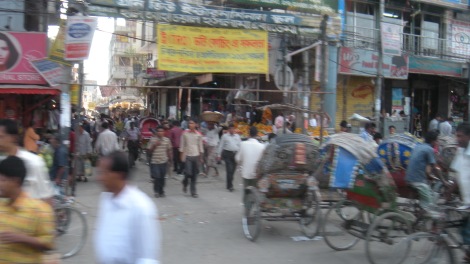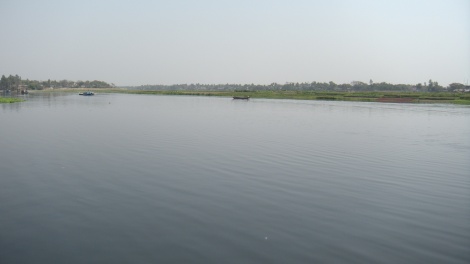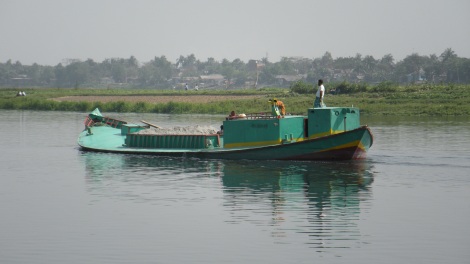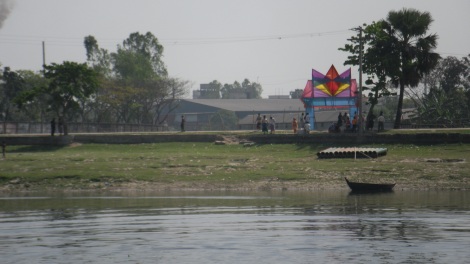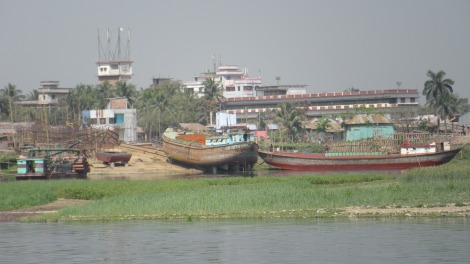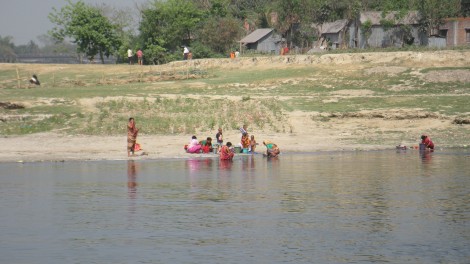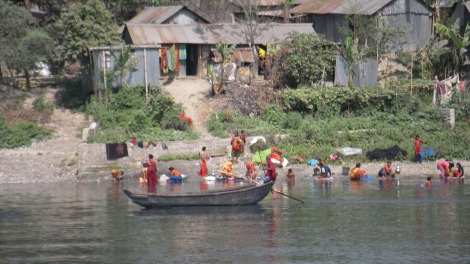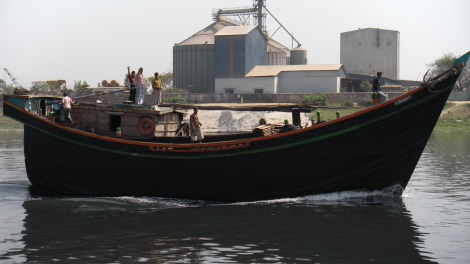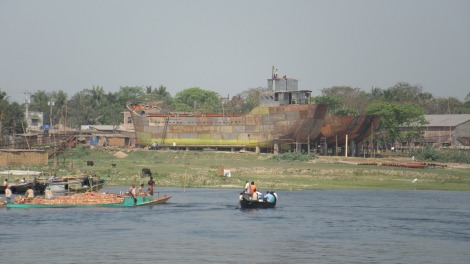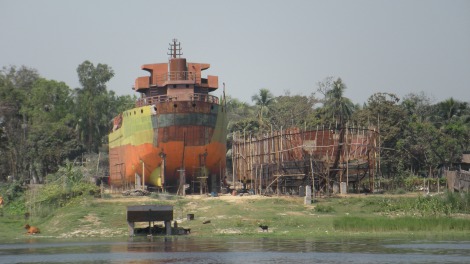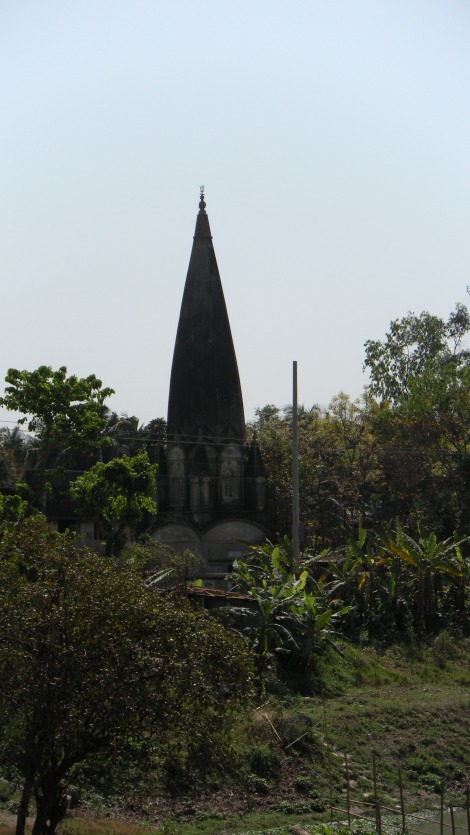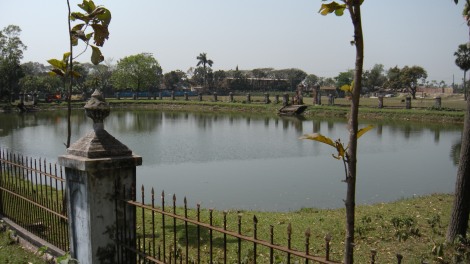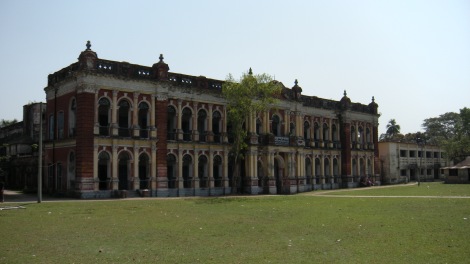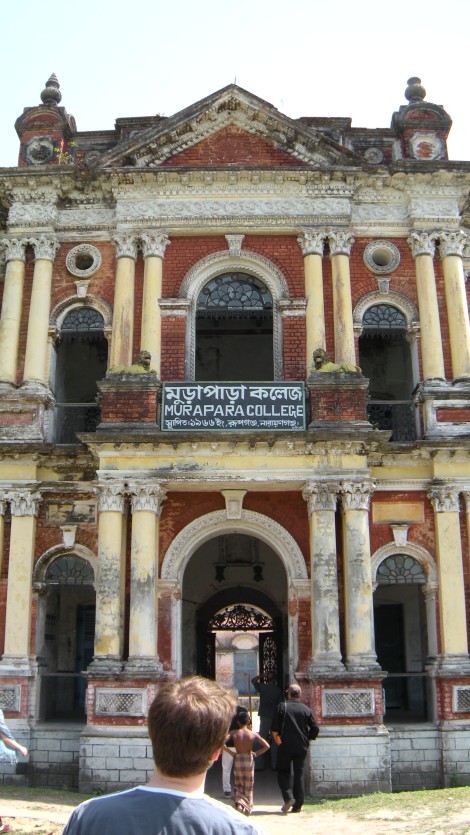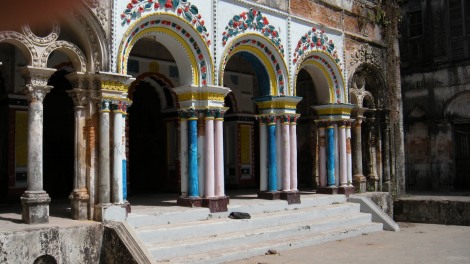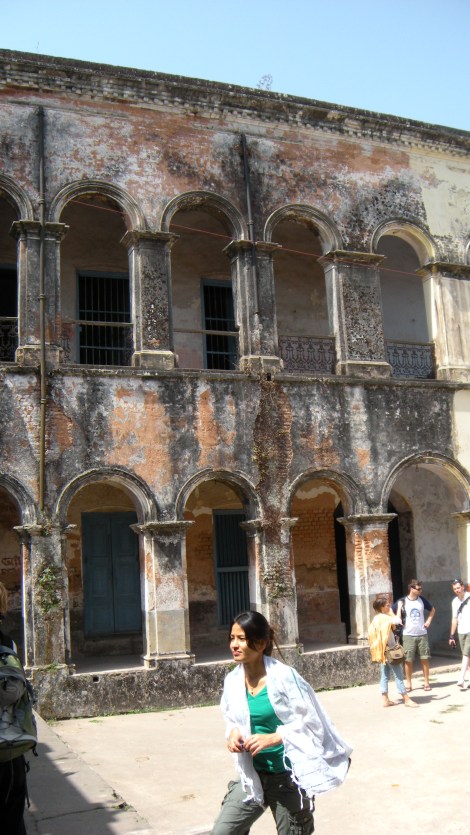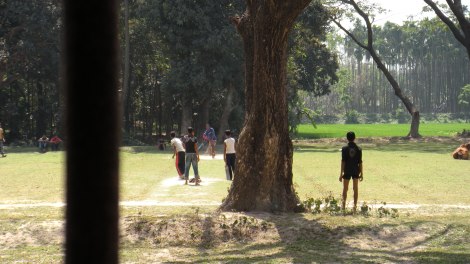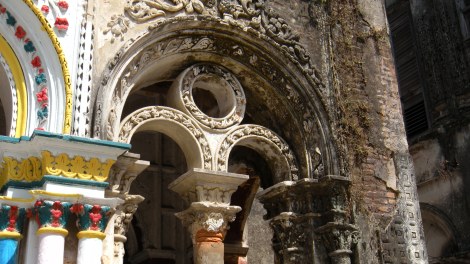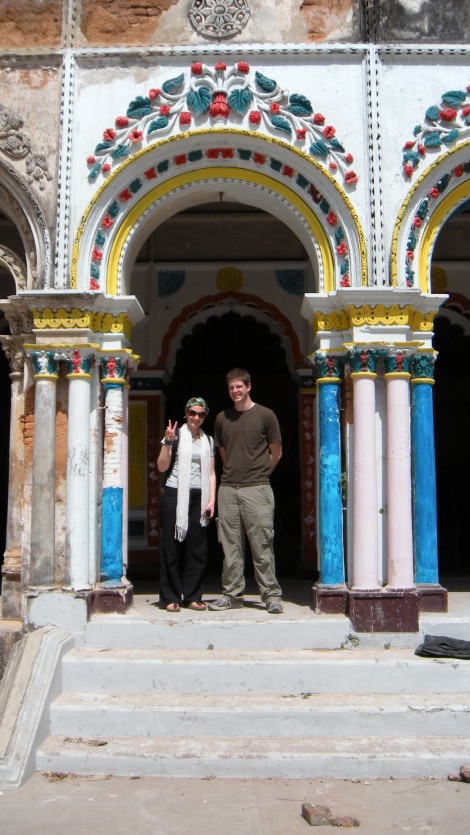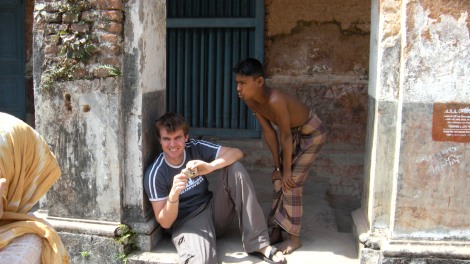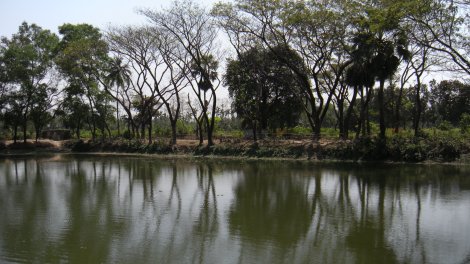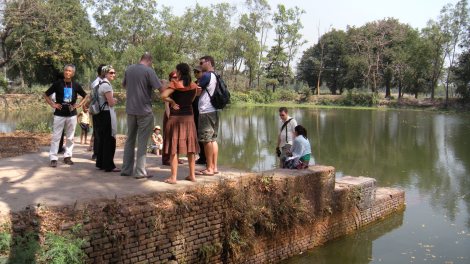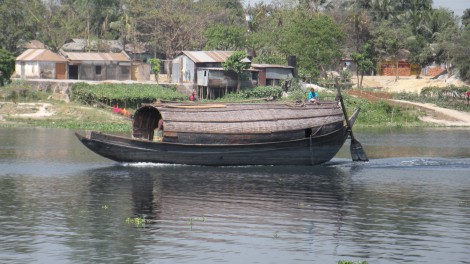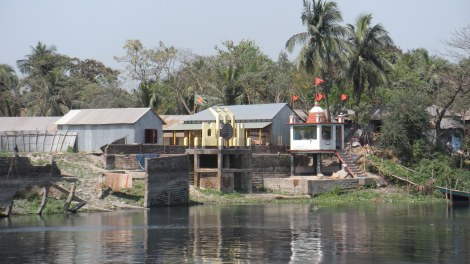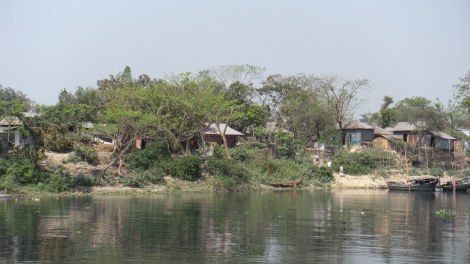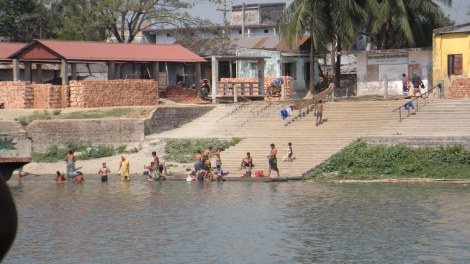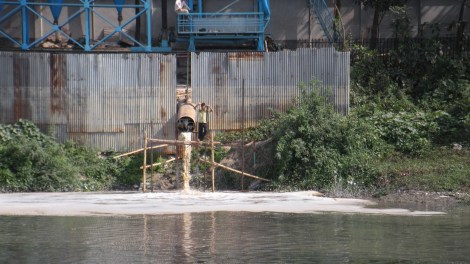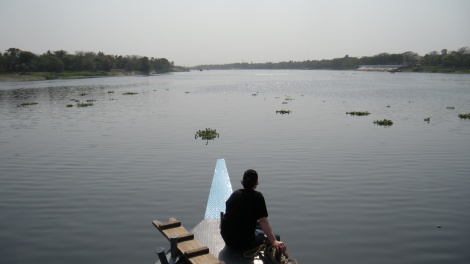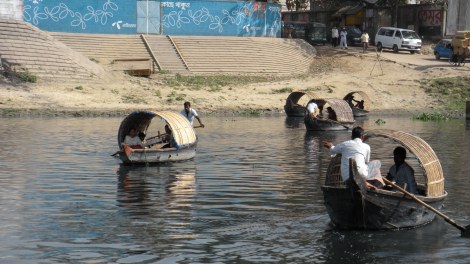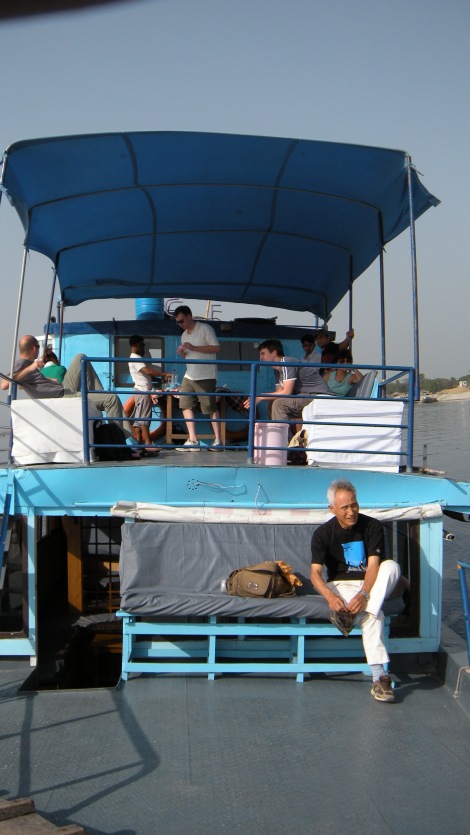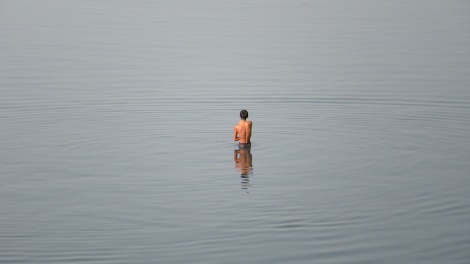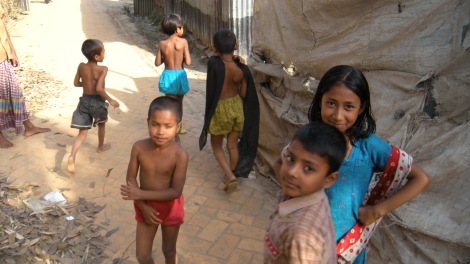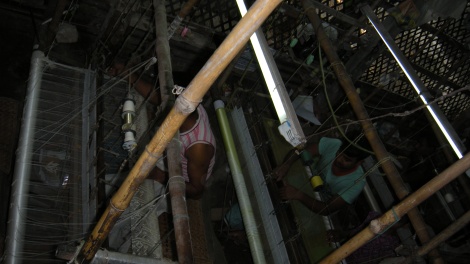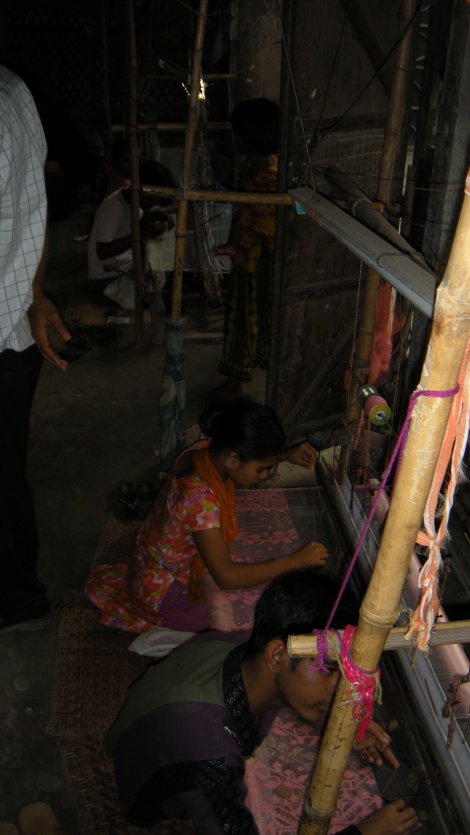After my internship had ended the Sunday before last, I took a trip for one week to Nepal, just “next-door” to Bangladesh. I went with my flatmate Tara to Kathmandu on Monday and Tuesday. During the days, she showed me around Kathmandu’s impressive cultural landscape and at night, she showed me around the notorious party district of Kathmandu; Thamel. Not to be confused in pronounciation with the Tamil Tigers, a mix-up that I was often the victim of. Kathmandu’s vast array of Hindu temples and old, traditional Newari architecture was stunning. It was here that I noticed how effortlessly Hinduism and Buddhism co-existed and even complemented each other here. Nepal is 80% Hindu, 15% Buddhist, with the extraneous percentage being made up of shamanistic and other local beliefs. Everywhere I looked, the two faiths existed peacefully and harmoniously, often literally alongside each other as a Buddhist stupa would often be paired with a Hindu temple. and while I might be admiring the colorfulness of a Hindu temple or holy site, I was at the same time taking in the splendor of the Buddhist prayer flags that hung from every religious structure.
Thamel is tourist destination number one and I actually found myself shocked and somwhat offended by the amount of white people surrounding me. I was no longer the only one in a developing country. As for the atmosphere and things to do, you can shop til you drop (your account balance that is), you can drink and smoke just about anything. I’ve lost count of how many times I’ve been offered hash. As for myself, as much as I honestly love Dhaka, it was nice and unbelievably relaxing to sit in a bar and have a beer in public. Thus passed a very relxing and pleasant two days, the routine of which I repeated on my return to Kathmandu.
As I read a bit more about Nepal, a very interesting observation struck me. Although Nepal is a comparatively major hub of tourism, its overall economy is in dire straits, and has been for decades, with little improvement being seen. The per capita income in Nepal is actually less than in bangladesh, and its child malnourishment rate is even worse than Bangladesh’s. But why didn’t I feel that. My thoughts were that a) there are tourist hubs where you are insulated somewhat from the overall state of the country, a luxury that does not exist in Bangladesh. b) Because of those hubs, you are afforded creature comforts like drinking and smoking in public, a reality that does not exist in Bangladesh. c) the society as a whole is more liberal, at least on the surface. You see as many girls and women on the streets as men, have women driving around Motor-scooters and holding higher positions more frequently. Because of all these three things, I believe, visitors cannot help but like Nepal, I know I do. I think it says something about the mindset that one invariably has when one visits a foreign country. We judge the “niceness” of a place based on our own comfort-sphere and feel all the better when not too much intrudes on that sphere. What I’m basically doing is congratulating the Tourist office of Nepal on a job well done.
On Wednesday I left very early in the morning for a bus-ride from Kathmandu to Pokhara, a small town that is nevertheless one of Nepal’s biggest outdoor draws. The bus ride took about 7 hours, providing lots of time to marvel at the changing landscape as we left the Kathmandu valley behind and wove our way through steep ravines and terraced hill-tops. Pokhara itself is a tourist area nestled along a steel-blue lake, watched over at one side by a hill range that is crowned with a gorgeous World Peace Pagoda and on the other side by the giant peaks that make up the Annapurna mountain range. It’s quite bizarre actually. In spite of the fact that it is one of the world’s biggest trecking and climbing destinations, Pokhara lies at only 800m above sea level, yet with the geography being what it is, on clear days and and with some luck, one is afforded views of the 8000m behemoths that lurk in the distance.
Thus, always with an eye towards the mountains, I plunged headfirst into making the best out of my all-too-short stay in this real-life Shangri-La. The day I arrived, I rented a boat and was ferried around the lake, getting my bearings, and being able to quietly read a book and drink a beer in gorgeous weather. The next day, I arranged a motorcycle trip with the same guy, taking me away from the tourist and more into the country-side, where I got to visit several caves and the quite traditional suburbs of Pokhara. In the afternoon, I hiked up to the World Peace Pagoda, a beautiful 2 hours hike that gave excellent views of the valley and Pokhara, although the relatively bad weather conditions rendered photography unsatisfactory. On Friday, I fulfilled one of my long-time dreams and went tandem-paragliding through the valley and over the lake. I was so in awe of the views that it took me 20 minutes to realize that if I didn’t also start focusing on how the glider moved, I would throw up. In the afternoon, a guy at the guesthouse I was staying at offered to take me to his ancestral village way off the beaten path away from Pokhara. The hike was long, at times even dangerous considering I was wearing tennis shoes, but absolutely fulfilling. The memory of standing in his home village being served tea by his uncle and looking over the vast moutains across the valley from us will always remain with me. The pictures do not even begin to do it justice.
Thus, after two and half days in which I did absolutely everything that could be done in that time, I traveled by bus to Kthamandu. Nepal is probably the most beautiful country I know of and I will seek to return to it, like Bangladesh, as soon as possible.
As for the blog, this shall be the last entry, at least under the blog’s current function as a chronicle of my travels in Bangladesh and Nepal. I want to thank you all for reading it, commenting on it and look forward to seeing you all again soon.
-Lorenz

